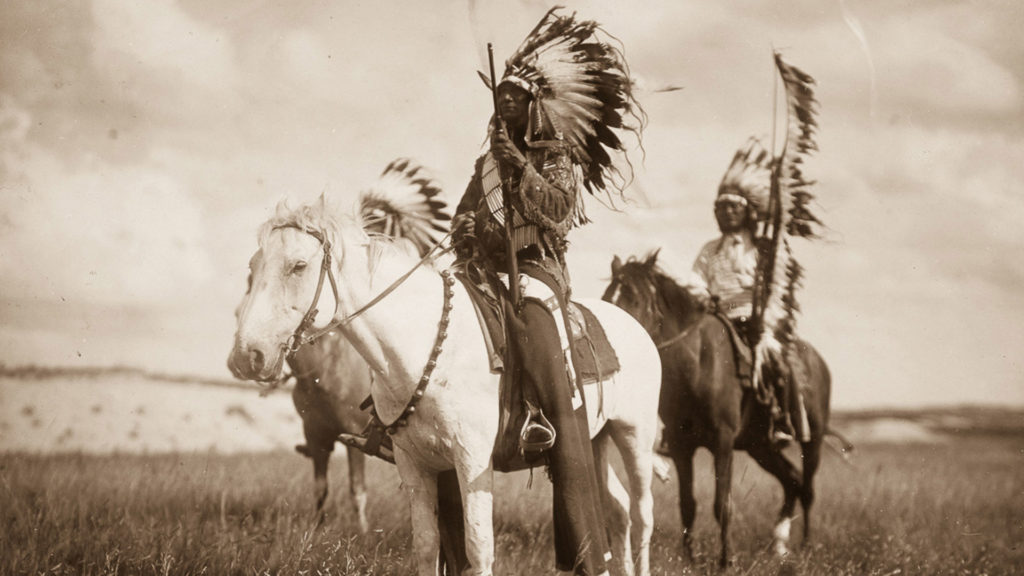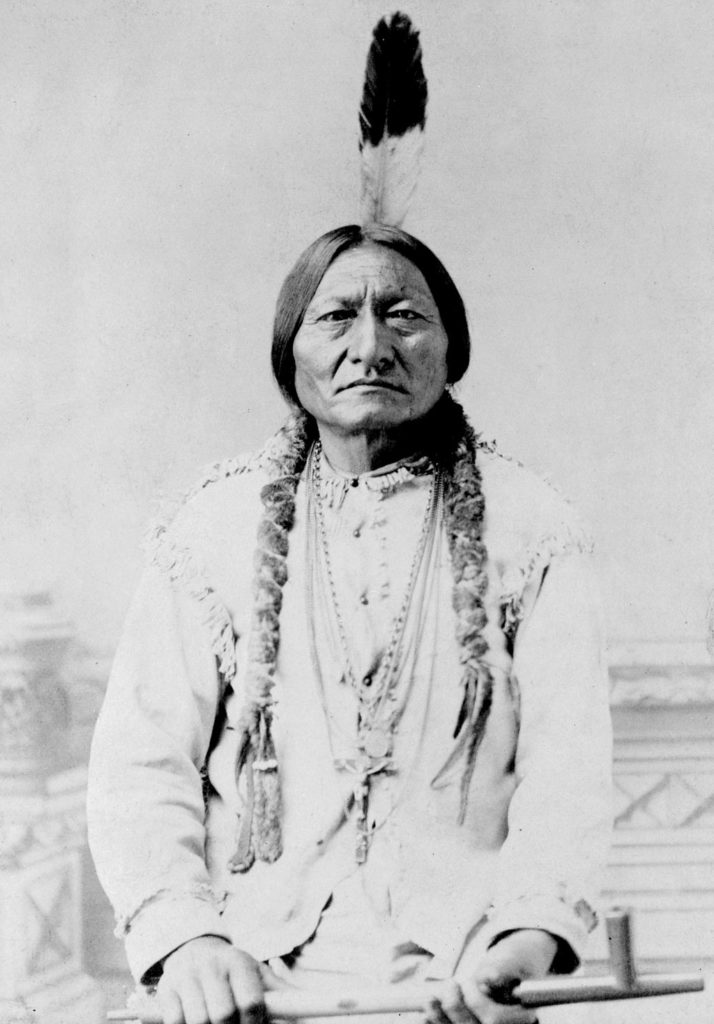Last updated on March 9th, 2023 at 12:36 am
The Lakota are among the oldest Native American tribes and part of the larger group of Sioux tribes in the Midwest. They have been an integral part of the region for centuries, living off the land and preserving their traditions and practices.
The Lakota were a nomadic tribe that roamed what is now known as South Dakota, Nebraska, Montana, Wyoming, Minnesota, and North Dakota in search of sustenance, hunting buffalo on the abundant plains. They lived according to principles emphasizing generosity, wisdom, and respect for all life.
While events throughout their lifetime caused immense hardship for the Lakota people, this post will explore their rich culture, and history
Early Lakota History
Their earliest history was recorded on hides in “Winter Counts.” These were pictorial calendars. They were nomadic people and used the sun and stars for navigation.
They also relied on their fine hunting skills to survive and frequently conflicted with other cultures. It is believed that they originally lived near southern Mississippi and migrated to what would eventually be Ohio, where they might have been one of the Mound Builder cultures throughout the 9th and 12th centuries.

By the 16th century, the Lakota had migrated to the northern Mississippi area in locations that would be named Minnesota, Iowa, Wisconsin, and North and South Dakota.
Lakota Tribe Facts
Tipis (buffalo-hide tents) were the perfect home for the nomadic Lakota because they could be easily assembled and disassembled.
Women were responsible for every aspect of the home, from more traditional expectations to assembling and disassembling it and hauling the posts required for the tipi in a traverse when traveling.
Lakota women also created porcupine quillwork (quills softened and dyed so they could be woven onto leather and birchbark) and beadwork with beads carved from natural, local materials.
The items made with these crafts were often created for ceremonial events. Eventually, beadwork replaced quillwork as the beads were much easier to obtain.
Being a warrior was important to the Lakota; they valued bravery and cunning. It was the height of success when they could force their enemy to admit they were defeated without wounding them.
The Lakota believed in the necessity to live in harmony with nature and that everything, animals, humans, rivers, rocks, and plants, have spirits and afterlives. The afterlife played a large part in the cycle of the natural world.
Europeans Arrive
When Europeans arrived, they brought horses to the American continent. The Cheyenne introduced the Lakota to horses soon after the first settlers arrived.
The introduction of horses changed how the Lakota hunted. They could focus more on hunting buffalo, an animal they worshipped for providing them with their food, clothing, homes (tipi materials), and other necessities.
Horses also changed how they could defend themselves, as they became experts at using the bow while on horseback. They dominated the plains and so were a great force when settlers encroached on their land.
Disease and Destruction
In the late 1700s, smallpox came to the Lakotas from the European settlers. Like the rest of the Native Americans, they had no immunity to the disease, which wiped out three-quarters of their number.
They migrated again, eventually to the Black Hills area. Migration often involved conflict with other indigenous peoples.
Lakota and the United States
The Lakota first contacted settlers in 1804 when one of the Lewis and Clark Expedition exploration parties came to declare American sovereignty. There are multiple accounts of early contact.
Some incidents include the Lakota being hospitable to the party, offering them food and music. However, they were aware and resentful of the party’s claim’s implications and did not allow the party to travel upstream the Missouri River via a standoff without casualties.
In 1823, the US Government led a war against the Arikara tribe, the Arikara War, and the first war with indigenous peoples in the plains.
When they won the war, some of the Arikara took jobs with them as scouts. When the US next attacked the Lakota and Cheyenne, the Arikara were the first to greet them.
Around 1860, the Lakota, Arapaho, and Cheyenne tribes often worked together against the settlers. They would attack trains, settlers, and government buildings in protest to ever more encroachment on their land, which inspired more retaliation from the US Government.
Eventually, the US built a fort on Lakota land. The Lakotas won the ensuing battle in what is now called Red Cloud’s War. This win inspired the US Government to sign the 1868 Fort Laramie treaty, assigning the Black Hills to the Lakota and permitting white settlers to pass nearby without resistance.
Unfortunately, the US Government didn’t respect their end of the treaty. They discovered gold in the hills, and settlers would encroach more and more on Lakota land in search of gold. The US army grew stronger as well, and more attacks soon began, leading to the Great Sioux War in 1876. The Lakota lost this war and were removed to reservations.
A treaty was signed, giving the US Government control of the Black Hills. It is unclear how many Lakota leaders agreed to this. Conflicts continued between the Lakota and the US Government.
In 1890, reservations were attacked. Sitting Bull was killed at the Standing Rock reservation, and the Wounded Knee Massacre at the Pine Ridge reservation killed between 150 and 300 Lakota.

Reservation Life
The US Government gave indigenous peoples unwanted, inhospitable land for their reservations and promised little involvement. This left people living on reservations with little to build their lives with. Today, there are five Lakota reservations, each one housing different bands within the Lakota tribe.
They are poor, with 40% living in insufficient housing today. It is very difficult to own private land on a reservation, so it is hard for anyone to gain credit or gain wealth. Many adults have to leave the reservation to find suitable work. Older adults are left to care for many more children than they have resources or space for.
Women have often been targeted victims of violence, and the crimes are often under-investigated. The Lakota are still battling for their land, protesting against the Keystone Pipeline in 2015 and seeking to regain their ownership of the Black Hills.
The Lakota and other indigenous peoples on reservations began inviting tourism to their reservations to help bolster their economic growth and expand awareness of their cultures.
Women still make beadwork with glass beads like they have used since the 1800s. Visitors may be taken to historical sites within the reservation. There will also be a rich display of culture and life as the Lakota lived it. Some reservations offer hands-on tipi-raising and traditional use of the bow and arrow for tourists and representations of powwows. Each reservation will vary depending on the individual culture.

